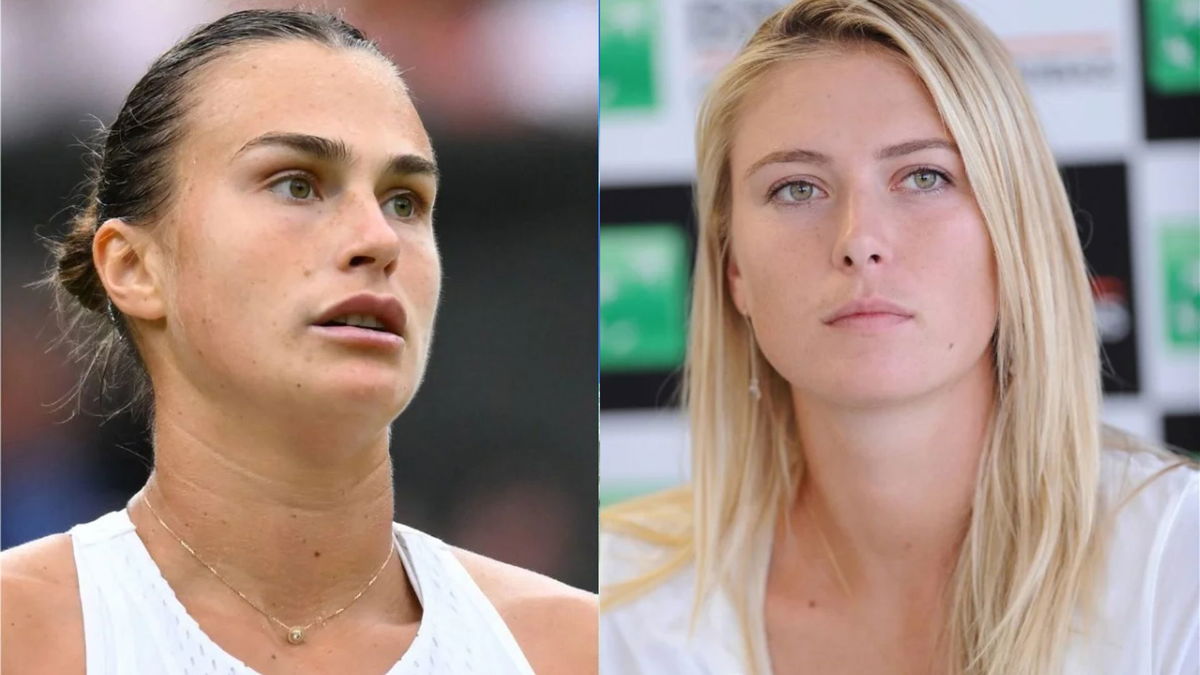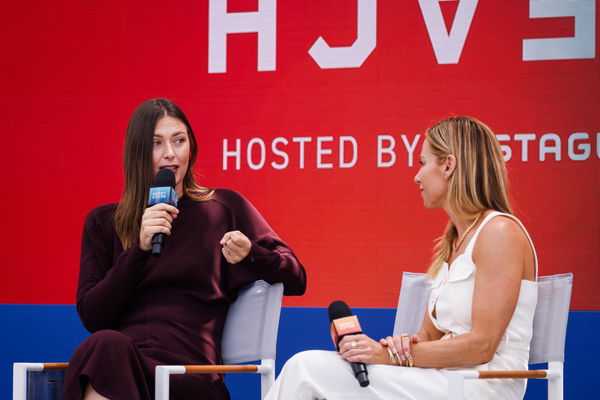
Imago
Image Credits: Imago

Imago
Image Credits: Imago
The saga continues, i.e., that of women, especially women in sport, never being commended in their own right and always being compared to or viewed from the lens of a man. That’s right, it’s hard to ignore when the same old story gets repeated time and again. With regard to Wimbledon in particular, back in the day, things used to be super backward. Believe it or not, there was a time when women players would have their marital status depicted in their names next to the scores, while men wouldn’t! And it was only in 2007 that Wimbledon started allotting equal prize money to the men and women champions, who now each receive £3,000,000.
Watch What’s Trending Now!
Though Wimbledon seems to be learning from its past mistakes, the media certainly doesn’t seem to get the hint, and recently, former champion Maria Sharapova stood up for the current world No. 1, Aryna Sabalenka, who is playing her quarterfinal match in Wimbledon tomorrow, after a misogynistic headline was printed in the Wall Street Journal.
Sharing a post of the article on her Instagram story, Maria Sharapova called out the newspaper writing, “What is this headline and what is this article. You can do better @WSJ.” For context, the article was titled “World’s number 1 who hits so hard she practices against men,” alluding to the fact that most women can’t hit that hard. Though the article paraphrased something Sabalenka had said earlier in the tournament about her practice routine, it still didn’t sit right with its specific choice of language.
ADVERTISEMENT
What Sabalenka had said early on in the tournament was in reference to her making use of the tournament to practice with tennis greats like Djokovic and Sinner. Of the experience, Sabalenka was quoted as saying, “Hitting with the guys, it’s another level of intensity. When you see on that side, someone like Jannik or Novak, you learn from them. You reflect what they do on court.” However, the guys in question was just in reference to these two players and alluded to greats learning and playing off greats, not men vs. women.

Getty
CANNES, FRANCE – JUNE 19: Maria Sharapova and Shannon Pruitt speak on stage during “1 on 1 with Maria Sharapova” panel on June 19, 2023 in Cannes, France. (Photo by Richard Bord/Getty Images for Stagwell)
What’s more interesting, however, is Maria Sharapova, who was, in her past, a media darling, now taking a stand against the same industry that favored her against her onetime nemesis Serena Williams.
ADVERTISEMENT
Maria Sharapova standing up for fellow women in tennis after the controversial and misogynistic ‘beauty and the beast’ era
Tennis fans will remember the afternoon back in 2004 when a 17-year-old Maria Sharapova beat Serena Williams, the two-time defending champion at the time, in straight sets 6-1, 6-4. The moment was commendable for many reasons: Sharapova’s game at the time, her first Grand Slam win, the talent of these two athletes, and Williams’s ability to make it to the final despite a knee injury she’d suffered in 2003. However, the commentators and the press turned the attention somewhere else completely.
ADVERTISEMENT
The match started being famously touted as the clash between ‘the beauty and the beast,’ touting the more lean Sharapova as the beauty and the muscular, Williams as the beast and carrying out age-old stereotypes for how women should look rather than paying any heed to how either of them was playing.
Though, at the time, Sharapova didn’t per se criticize the media, she seemed to have forged her own relationship with Williams apart from the narrative that was being pushed on them. Now, however, Sharapova is standing up against the patriarchy in the name of Sabalenka, and it doesn’t stop there; she has even been outspoken about how women athletes are reshaping the sports industry business! While it may not be a direct response to what happened with Williams in 2004, it is making the point pretty clear
ADVERTISEMENT
ADVERTISEMENT
ADVERTISEMENT

